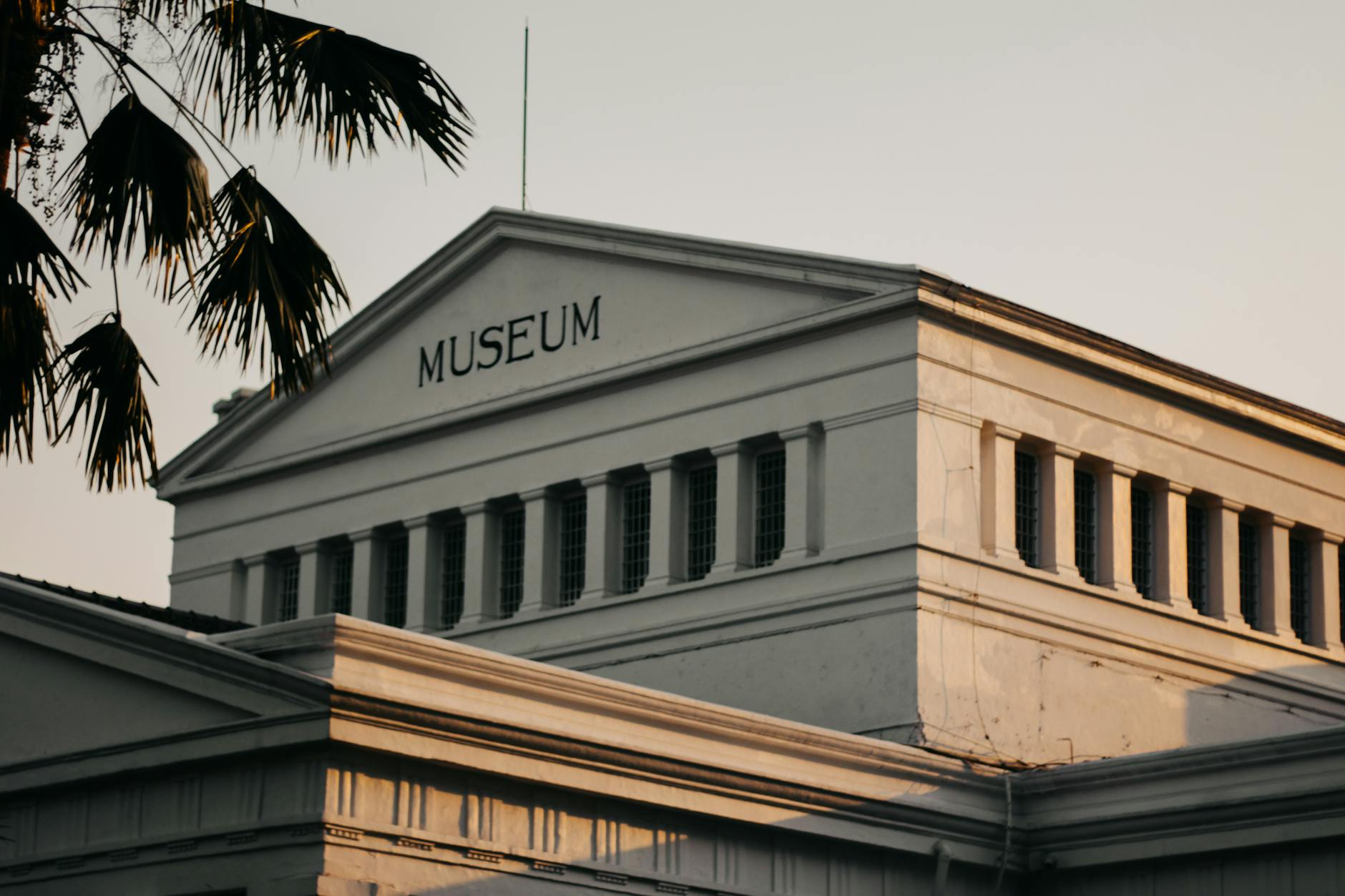October has served as LGBTQIA+ History Month in the United States since 1994, presenting us with the opportunity not only to celebrate queer identities but also to acknowledge the stories and history that have built our community.
The celebration, education, and preservation of LGBTQIA+ history is critical, despite ongoing political attacks to censor and destroy the reality that queer people have always existed.
Last week, I reviewed films, books, podcasts, and video series that serve as fantastic introductions to LGBTQIA+ history. Beyond traditional media, there are dozens of LGBTQIA+ archives across the country that act as living repositories of queer history to connect previous generations of leaders, artists, and everyday people to the present. Honor the voices that refused to be erased; ensure the next generation never has to search in silence.
American LGBTQ+ Museum
Technically speaking, the American LGBTQ+ Museum does not exist. Yet. Planning for a national LGBTQIA+ history museum began in 2017 and has been under construction over the past five years. Ultimately, it hopes to host hundreds of thousands of visitors throughout 4,000 square feet of physical space, combined with virtual exhibitions, in New York City.
The American LGBTQ+ Museum is currently on track to officially open to the public in 2027.

The ArQuives
Although the ArQuives are Canadian, their online collection is extensive enough that it deserves to be included. Originally founded in 1973 as the Canadian Gay Liberation Movement Archives, it preserves thousands of books, diaries, portraits, zines, press clippings, videos, posters, cassettes, buttons, flags, T-shirts, and other items of note.

Digital Transgender Archives
The DTA uses material from more than sixty international colleges, universities, nonprofit organizations, and private collections to serve as the world’s largest transgender library. The site works similarly to the Internet Archive and is completely free for individuals to use.
DTA hosts born-digital materials, digitized records, and non-digital archives. Its collection is curated from content before 2000, so post-2000 materials are not hosted through the DTA.

DID YOU KNOW?
LGBTQIA+ people have existed everywhere, which means every city has the potential to have a local LGBTQIA+ museum, such as St. Louis, San Diego, and Boston. Search what resources that are close to you to learn more about local queer history!
If your area does not have any related institutions, you have the power to create your own. Queer history is tomorrow, yesterday – and today.
Gerber/Hart LGBTQ+ Library & Archives
Based in Chicago, Gerber/Hart is one of the largest LGBTQIA+ libraries in the United States and houses 14,000 volumes and 800 periodicals. Unlike other notable museums, like the GLBT Historical Society, Gerber/Hart boasts an impressive online collection and exhibits for online users to browse.

GLBT Historical Society
Even though the GLBT Historical Society hosts a smaller collection than some of its colleagues, it is the second full-scale stand-alone museum in the world and is one of the few American LGBTQIA+ archives that hosts paid staff to produce exhibitions, programming, and research.
Interference Archive
Okay, the Interference Archive isn’t necessarily queer. It’s a volunteer-run library centered on social movements, which includes the history of LGBTQIA+ equality. Activism and social justice produce unique memorabilia to sway the general public, and thus the Interference Archive is filled with posters, zines, buttons, and materials used by activists to change the world.

Leather Archives & Museum
LA&M is the leading institution preserving queer erotica and has been preserving kink and fetish history since 1991. It was originally established in response to the AIDS crisis due to the inherent kink associated with LGBTQIA+ people decades ago. Without the LA&M, history from leather and fetish communities would have been lost, intentionally suppressed, or discarded.
The LA&M is open to the general public, and its collection is available to view online. However, due to the nature of its material, users must be at least 18 years old to view online collections or visit the LA&M.

Queer History YOU Should Know #1
Matthew Shepard, whose death lead to federal passage of the Matthew Shepard and James Byrd Jr. Hate Crimes Prevention Act in 2009, was a real American student who was beaten, tortured, and left to die in rural Wyoming in 1998.
After robbing and inflicting immense pain on Matthew due to being gay, hits murderers tied him to a split-rail fence and left him to die. His murder, as well as the murders of James Byrd Jr. and Brandon Teena, received international attention as the public called for greater legal protection for minorities.
Lesbian Herstory Archives
Also based in New York City, the Lesbian Herstory Archives is both a community center and a library to preserve lesbian history. In their own words, the Lesbian Herstory Archives aims to protect “history that has always included, and continues to include, lesbian women, butches, femmes, cross dressers, passing women, and those who are trans, two spirited, same-gender-loving, as well as others, all of whom at times were, and still can be, made to feel unwelcome in the world by others, sometimes even by other Lesbians.”
The downside to the Lesbian Herstory Archives is that just part of their collection is digitized, so individuals will only be able to view a small proportion of the museum. The Archives have been around since 1974 and are considered the world’s largest collection of lesbian material, but they only recently began digitizing items.

LGBTQ National History Archives
The United States National Archives exists to preserve and provide public access to notable records created throughout US history. Most individuals seek the National Archives for data on family genealogy, military services, and documentation regarding previous laws, voting records, and budgets. For the majority of Americans, the National Archives are boring but necessary to ensure the federal government is relatively accountable and transparent.
The National Archives has a dedicated department for LGBTQIA+ records. Many of the National Archives’ items have been digitized for users to browse online, but hundreds of thousands of items are available online to view in person.
It is critical to consider the impact of current politics on the preservation of history. While most administrations have valued the importance of the National Archives regardless of political affiliation, that does not mean current or future parties won’t attempt to corrupt its data’s integrity.
LGBTQ Religious Archives Network
While other LGBTQIA+ archives work to preserve general and region-specific history, the LGBTQ-RAN encourages the study and preservation of LGBTQIA+ religious works. Its collection is entirely virtual and spans various denominations of Christianity, Judaism, Wicca, Hinduism, Buddhism, Islam, and Native American spirituality.

Library of Congress
In addition to the National Archives, the general public has access to the Library of Congress. The LOC also serves as the federal research service for Congress and operates the United States Copyright Office.
As one of the largest libraries in the world, the LOC contains 173 million items and 14 petabytes of content from around the globe. Although the Library of Congress employs federal employees, its staff are not tied to any given administration and aim to contain as much knowledge as possible without discrimination.
ONE National Gay & Lesbian Archives
The ONE Archives stems from the ONE Institute, the oldest active LGBTQIA+ organization in the country. ONE was created from the Mattachine Society in 1952 to help publish the United States’ first national gay periodical as ONE Magazine.
Given the fact that the ONE Archives descend from ONE Magazine, it makes sense that the organization values the preservation of queer history. It contains over 2 million items in its collection, ranging from books and films to photographs and buttons.

Queer History YOU Should Know #2
Bayard Rustin is often mentioned as an afterthought when learning about the civil rights movement of the 1960s, overshadowed by Martin Luther King Jr. and Malcolm X. Bayard was the principal organizer behind the March on Washington and MLK’s rallies.When Bayard is mentioned, it’s rarely discussed that Bayard was a gay Black man. In reality, this is why few people know him – Bayard was advised by his fellow civil rights advocates to lead from behind the scenes since his gay identity could possibly bring criticism to the community. Even today in places like the National Civil Rights Museum, Bayard’s identity is still enveloped in whispers.
Queer Zine Archive Project
Zines have a unique place in LGBTQIA+ history, allowing queer and punk activists a new medium to represent their ideas. QZAP was founded in 2003 to provide universal online access to preserved zines as another “living history” of larger queer culture.

Smithsonian Institute
Although there are larger museums, the Smithsonian plays a critical role as the federal authority on education and research. Prior to 1967, the Smithsonian was known as the United States National Museum – and today, the organization holds 157 items across 21 museums, 21 libraries, 14 education centers, various historical landmarks, and a zoo.
The Smithsonian also contains items related to LGBTQIA+ history, which is why it’s worth checking out when diving deeper into queer studies. However, compared to other federal entities, the Smithsonian has been the most directly targeted by political administrations to change and fit alternate agendas.
Stonewall National Museum, Archives, & Library
The Stonewall Inn and its associated riots occurred in New York City. The Stonewall National Museum, Archives & Library, on the other hand, is based in Fort Lauderdale, Florida. While it boasts an impressive digital collection, the Stonewall Museum, Archives & Library is most famous for its detailed LGBTQIA+ History Timeline, known as In Plain Sight.

The Center’s Archives
The Lesbian, Gay, Bisexual, & Transgender Community Center of New York City (also known as The Center) is arguably the largest LGBTQIA+ community center in the United States. The Center has been the starting point for many other important agencies, such as GLAAD and ACT UP, and hosts its own library archive.

Transgender Oral History Project
Originally, the Transgender Oral History Project was a documentary series meant to compile the experiences of transgender communities across the United States. The project behind the Transgender Oral History Project donated its items to the University of Minnesota so they could focus on their current project, “America in Transition.”














